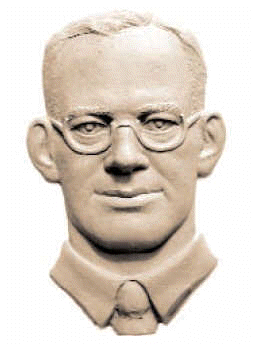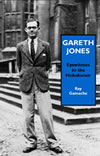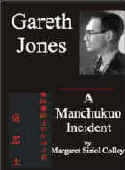Gareth Jones
[bas relief by Oleh Lesiuk]
HOME |
Stop Press |
Complete Soviet Articles & Background Information |
Précis of Gareth's
|
All Published Articles |
BOOKS
|
|
|
|
More Than Grain of Truth(2005) |
|
|
TOPICAL
'Are you Listening NYT?' U.N. Speech - Nov 2009 |
Gareth Recognised at Cambridge - Nov 2009 |
Reporter and the Genocide - Rome, March 2009 |
Order of Freedom Award -Nov 2008 |
Premiere of 'The Living' Documentary Kyiv - Nov 2008 |
Gareth Jones 'Famine' Diaries - Chicago 2008 |
Aberystwyth Memorial Plaque 2006 |
GENERAL
Scholarship Fund |
Site Map |
Links |
Legal Notices |
Sponsored Links |
Contact |
The Enigma of Ireland (ii).The Western
Mail - November 7th, 1933
HATRED OF THE BRITISH AND INTERNAL DISSENSIONForces That Are Splitting the CountryBy Gareth JonesImagine the
bitterness that would exist in any South Wales town in which a spot could be
pointed out where the enemy had shot a fellow-citizen; in which the finest
buildings had been shattered by the “invaders” shell; and in which each man
you met could tell you tales of murder, ambushes and street fighting between
Welsh-man and foreigner. Imagine that and you will have a glimpse of public
sentiment In Ireland. This background
of the Irish problem as the Nationalist Irishman sees it was brought vividly to
my mind when. I explored Dublin with an energetic Irishman with a
rollicking laugh. He had fought in the 1916 Rising, had been sought by the
British, captured and imprisoned,, and finally reached a high position in the
Free State Government - namely, Professor Michael Hayes, Speaker in the Cosgrave
Parliament. As we drove down
the main street, O’Connell-street, he pointed out the Post Office. “That
building,” he told me, “brings back memories of the shot and shell in 1916,
when, on Easter Monday, we rose against the British and occupied the building.
For almost a week this street - one of the finest in Europe - was a shambles.
You could hear the thud of the British bombarding us from the river a few
hundred yards away. We stuck out until the Saturday, a grim feat of
determination. Just think of it, a small band of man defying an empire for
the sake of freedom.” MOUNTJOY PRISON
O’Connell-street
was practically destroyed and new buildings now line it; but however new the
buildings their aspect cannot wipe out the memory of Easter Week, 1916, and I
learned why later when I stood with Professor Hayes looking at an ugly grey
building. “That is
Mountjoy Prison,” he said. “That is where the battle for freedom was
won, for behind those walls the young leaders of the Easter Week Rising were
executed.” From Mountjoy Prison we went to a structure which looked
dominating and cruel and to which I took an instant dislike, “Dublin
Castle,” said the Professor, as we entered a cold courtyard.
“There,” he pointed to a bare wall in an ugly patch of ground, “Is where a
number of -Irishmen were shot down. I myself spent some time behind
prison-bars here,” and be smiled. WHERE MULCAHY HID
From place to
place we went where once there had been ruthless war between the Sinn Feiners
and the British. “Look down that side street,” my guide bade me,
“That Is where Dick Mulcahy, who was Chief of Staff, hid in my rooms for many
months in 1919, when he was on the run and when the British had a hue and cry
after him. We had a narrow escape one night, when a British officer and a
policeman came to raid us, but Dick just got out in time over the roof!” No wonder there
was a tone of cold bitterness in General Mulcahy’s voice when, a few days
later, I talked to him about Wales, and he recalled weary months of imprisonment
in Frongoch camp, near Bala, after the 1916 Rising. Further on there
were streets and canal banks where occurred the conflicts with the Black and
Tans - events which make young Irish people clench their fists. To the
British these are vague happenings in a distant age, but to the Irish they are
ever present, for in Irish politics-memory of the past is the most important
factor. This was
impressed upon me deeply during that journey which had begun with the General
Post Office battleground of 1916 and had culminated with scenes of Black and Tan
skirmishes. The Irish pass
these spots every day; they still mourn friends executed in the times of
trouble; they can see the bullet marks on the Bank of Ireland columns; every
stone speaks of the struggle against the British. To the British 1916 is
many years ago and the Irish War of 1920 is stuff for memoirs, not for emotions;
but to the Irish they both happened yesterday, and for them Cromwell lived only
the day before. As a result, hatred of Britain still is the greatest
rallying-cry to whip up Irish feelings. KEVIN O’HIGGINS
Conflict against
the British is, however, by no means the only kind of conflict in Ireland, and
in order to throw light upon another important factor in the Irish enigma I
shall describe a second personality and a second scene. Before a blazing
fire in a cosy drawing-room sat a beautiful woman, with delicate features, dark
hair, large’ deep eyes, whose blue velvet dress fell in flowing folds to the
ground. In a calm, hushed
voice, never raised, however sharp might be the attack or enthusiastic the
praise she uttered, without extravagant gestures, she talked to me for hours of
Ireland’s past and of Ireland’s personalities. She was the widow
of Kevin O’Higgins, stern Minister of ‘justice, ruthless but just, who was a
statesman and even had the makings of a dictator, but who was so hated by his
opponents that in 1927, not long after he had declared, “The South of Ireland
is quite safe now, even for him!” he was shot down on his way to Mass. In the house of
his widow I learned much about Ireland. I listened enraptured to a
brilliance of conversation which is rarely enjoyed outside that country, and
which is the combination of an age-long culture with the charm of a gifted race. RULE OF THE GUN
I found out how
scorpion-like the Irish tongue can be and how with a few quiet rapier-like
slashes it can relentlessly damage a man’s dignity and character. Above
all, however, I learned the depth of the Internal strife in Ireland and the
lawlessness to which it leads. I was in the
house of a man who had devoted himself to stamping out the rule of the gun in
Ireland, though in the end the gun had triumphed over him - an Irish gun.
The shot which killed him brought an echo of the days when in 1922 Free Staters
scoured the country for rebelling Republicans and when ambushes by Irishmen took
toll of Irish lives. Although the
“Cease Fire” of 1923 ended the internecine bloodshed, memories of Civil War
are green. Republicans still recall their fellow-fighters being blown to
pieces by Free State bombs and Free Staters cannot forget the ambushes which
destroyed some of their finest soldiers, such as Michael Collins. Desire
for revenge, living on from the Civil War, explained why at a private dance at
which Gen. Mulcahy was present I saw in the ball a bodyguard watching with a
revolver, and in the grounds of the house three guards armed with a machine-gun. However orderly
and even prosperous may appear the streets of present-day Ireland, the Civil War
still goes on in the hearts of a minority of irreconcilables, and is one cause
of the acidity of political discussion, of the unbalanced views, of the word
“traitor” bandied about in every other sentence, and of the part played by
personal animosity, which are such striking features of Irish politics. IRELAND’S PAST
It is a long way
from the thoughts aroused by a conversation with Kevin O’Higgins to a period
over a thousand years ago, but I am going to make a journey back through the
centuries and give a third picture of my visit, because without it one. cannot
know Ireland. It is that
neither of a professorial politician nor of a widow of an Irish personality, but
of a certain room in the National Museum, Dublin, which contains a treasure of
Ireland’s past. I looked at the
miracles of craftsmanship of which Ireland was capable in the eighth to the
eleventh centuries, the perfection of design and the delicacy of execution of
the Tara Brooch, the intricate decoration and dignified symmetry of the Cross of
Cong. the gold, silver and bronze worked so exquisitely in the Ardagh chalice,
and I came to the conclusion that here was a rich culture, possessed by a
skilful people with a keen eye for colour and design and, a sense of artistic
dignity. I examined the
minute spirals of the gold filigree work and the crystals in the Shrine .of St.
Patrick’s Bell, and I remembered that Ireland was a country not only of
artistic but also of spiritual pre-eminence and had sent missionaries to convert
many parts of Europe. HOSPITALITY AND HUMOUR
An ancient
culture which in politics is now dominated by two forces - hatred of the British
and internal dissension. Such is Ireland. There are, however, two
characteristics which I should like to add, and those are hospitality and humour;
hospitality which is so warm that it melts at once even the freezing national
antagonism, and humour which is so sparkling that it even lightens the fraternal
strife. Irish hospitality
knows no national boundary, and to individuals it is gay, unselfish, and
sincere. Irish friends are of unlimited kindness to visitors, whether they
be Welsh or English. Their humour is spontaneous and so irrepressible that
even the President is not spared its shafts. Among the first
things I read In an Irish newspaper was the item: “An applicant for the
principalship of Derry Technical School gave as his reference the Pope, King
George, Dollfuss, and Gordon Richards!” A strange
combination of national characteristics – humour, hospitality and hatred - and
hatred may lead Ireland into dark days, for it is again splitting the country
into opposing forces. What these forces are I shall tell later. To-morrow:
THE BLUE SHIRTS |
|
||||||||
|
|||||||||



